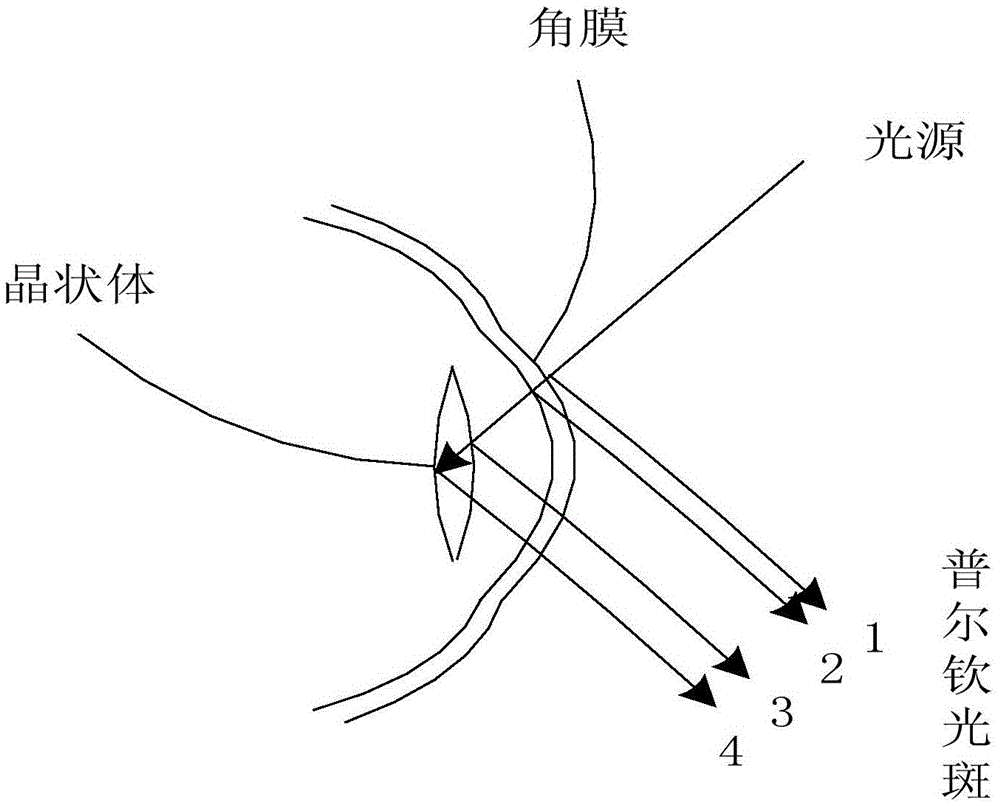Iris identification system with living body detecting function
An iris recognition and living body detection technology, which is applied in the field of iris recognition systems with living body detection function, can solve the problems of poor practicability and low reliability of recognition results.
- Summary
- Abstract
- Description
- Claims
- Application Information
AI Technical Summary
Problems solved by technology
Method used
Image
Examples
Embodiment 1
[0144] like Figure 4a In the iris recognition system shown, the light source module uses a combination of LEDs with three bands, including 850nm LED110, 940nm LED120, and white fill light LED130. The photoelectric sensor CMOS camera 201, 850nmLED110 and 940nmLED120 are at a certain distance from the CMOS camera 201, and the dark pupil phenomenon can be realized under the lighting mode at this distance, and other optional positions of the 850nmLED110 and 940nmLED120 are on the track 141, such as Figure 4b , Figure 4c As shown, the distance between the white supplementary light LED130 and the CMOS camera 201 is very close, and the bright pupil phenomenon is realized under the lighting mode at this distance. Or there is a certain distance from the 940nm LED120. Under the illumination mode of this distance, the radius of the cornea of the eyeball can be positioned by double light spots. In this example, the living detection method of the iris recognition system can choose to...
Embodiment 2
[0155] like Figure 5a , the iris recognition system shown in , in order to simplify the equipment hardware and equipment volume, this example compares Figure 4a Less 940nmLED120, Figure 5a neutralize Figure 4d The lighting layout is similar, Figure 5b neutralize Figure 4e The lighting layout is similar, Figure 5c neutralize Figure 4a The lighting layout is similar, so the living body detection method and control strategy are the same as the above example, the only difference is that there is no light source 940nmLED120, so for the spectral analysis method, only the imaging spectrum information of 850nm and white light source is analyzed, and the corresponding CMOS camera 201 will also be A multi-band photoelectric sensor that is sensitive to both the white light source and the 850nm band. For each light source in the implementation example of the present invention, such as 850nm LED110, 940nm LED120, white supplementary light LED130 and other light sources can be...
Embodiment 3
[0157] Since the manufacturing process and popularity of the multi-band sensor will affect its price, the iris recognition system of the present invention can be realized by using a combination of relatively popular photoelectric sensors. like Figure 6a As shown, the light-sensing module is composed of a CMOS camera 211 that senses the visible light band and a CMOS camera 221 that senses the 850nm band. 211 only images the radiated light waves of the white supplementary light LED130, and the CMOS camera 221 only images the radiated light waves of the 850nm LED111 and 112. Compared with the previous example, this example only replaces the multi-band photoinductor CMOS201 with two single-band photoelectric sensors 211, 221. The imaging effect is the same, so the living body detection method in this example is implemented in the same manner as the previous example. In practical applications, the CMOS camera 211 and the CMOS camera 221 can be placed at a certain distance accordi...
PUM
 Login to View More
Login to View More Abstract
Description
Claims
Application Information
 Login to View More
Login to View More - R&D
- Intellectual Property
- Life Sciences
- Materials
- Tech Scout
- Unparalleled Data Quality
- Higher Quality Content
- 60% Fewer Hallucinations
Browse by: Latest US Patents, China's latest patents, Technical Efficacy Thesaurus, Application Domain, Technology Topic, Popular Technical Reports.
© 2025 PatSnap. All rights reserved.Legal|Privacy policy|Modern Slavery Act Transparency Statement|Sitemap|About US| Contact US: help@patsnap.com



